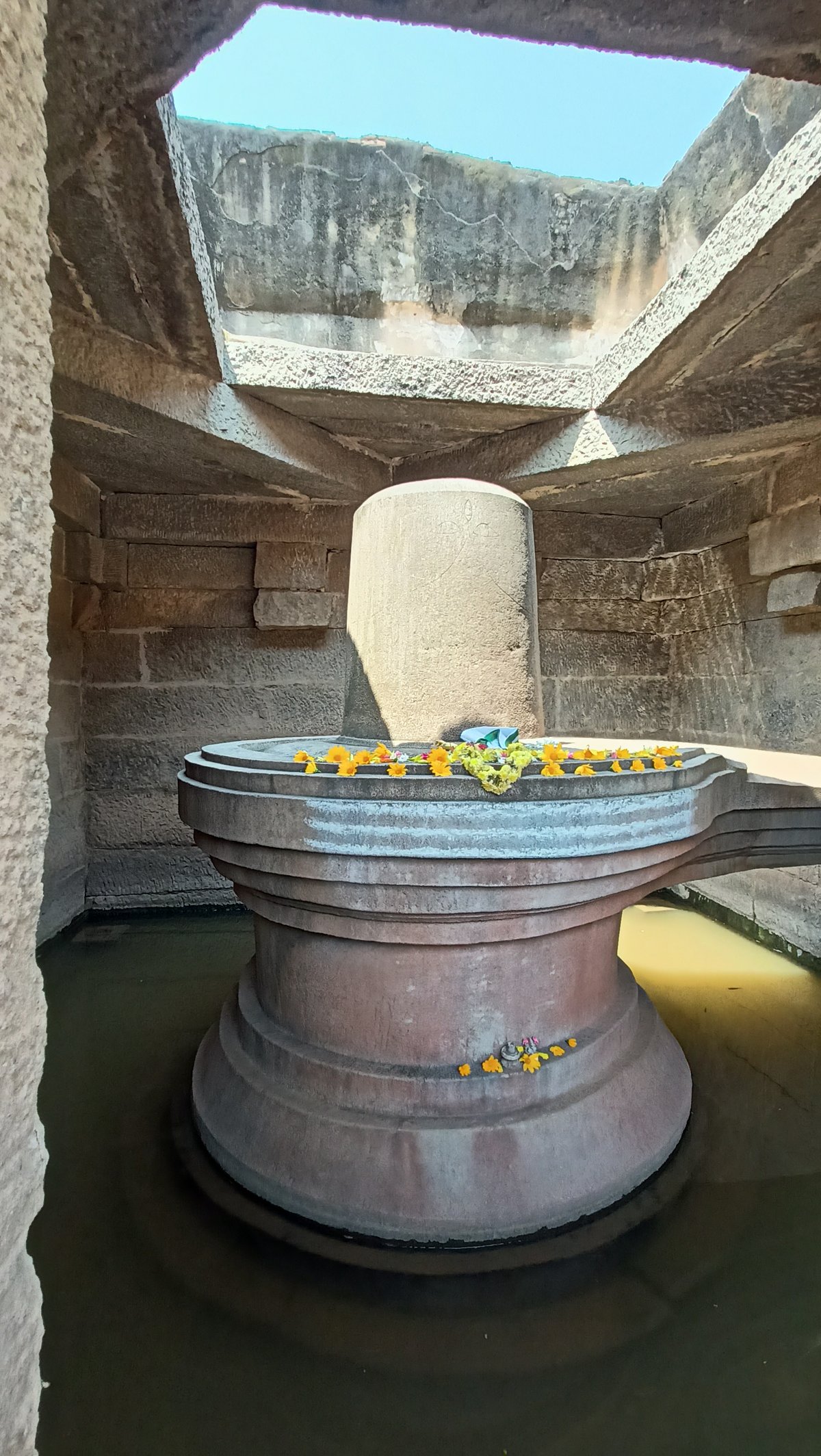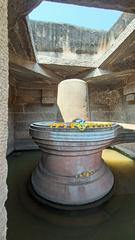
Visiting the Royal Enclosure in Hampi: Hours, Tickets, and Travel Tips
Date: 18/07/2024
Introduction
Nestled within the captivating ruins of the Vijayanagara Empire lies the Royal Enclosure in Hampi. This sprawling complex, once the epicenter of the Vijayanagara dynasty, stands as a monumental testament to the grandeur, power, and artistic brilliance of a bygone era. Founded in 1336 CE by Harihara I and Bukka Raya I, the Vijayanagara Empire was strategically established to counter the expanding Delhi Sultanate. The founders chose Hampi, a rugged yet strategically beneficial location, as the capital, and the Royal Enclosure quickly evolved into the nerve center of the empire.
Over centuries, the Royal Enclosure has borne witness to the rise and fall of one of India’s most powerful dynasties, leaving behind a plethora of architectural marvels that continue to captivate visitors today. From grand palaces and water features to intricate carvings and ceremonial platforms, the Royal Enclosure offers a unique glimpse into the opulent lifestyle and sophisticated governance of the Vijayanagara rulers. (source, source)
Table of Contents
- [Introduction](#introductionintroduction)
- [Historical Background of the Royal Enclosure](#historical-background-of-the-royal-enclosurehistorical-background-of-the-royal-enclosure)
- [The Rise of a Capital: Founding and Early Years](#the-rise-of-a-capital-founding-and-early-yearsthe-rise-of-a-capital-founding-and-early-years)
- [A Fusion of Styles: Architectural Influences and Evolution](#a-fusion-of-styles-architectural-influences-and-evolutiona-fusion-of-styles-architectural-influences-and-evolution)
- [The King’s Abode: Structures of Power and Administration](#the-kings-abode-structures-of-power-and-administrationthe-kings-abode-structures-of-power-and-administration)
- [A Glimpse into Royal Life: The Queen’s Palace and the Lotus Mahal](#a-glimpse-into-royal-life-the-queens-palace-and-the-lotus-mahala-glimpse-into-royal-life-the-queens-palace-and-the-lotus-mahal)
- [The Fall of an Empire: Decline and Abandonment](#the-fall-of-an-empire-decline-and-abandonmentthe-fall-of-an-empire-decline-and-abandonment)
- [Rediscovering the Past: Excavation and Preservation Efforts](#rediscovering-the-past-excavation-and-preservation-effortsrediscovering-the-past-excavation-and-preservation-efforts)
- [Visitor Information](#visitor-informationvisitor-information)
- [Ticket Prices and Visiting Hours](#ticket-prices-and-visiting-hoursticket-prices-and-visiting-hours)
- [Travel Tips](#travel-tipstravel-tips)
- [Nearby Attractions and Activities](#nearby-attractions-and-activitiesnearby-attractions-and-activities)
- [Special Events and Guided Tours](#special-events-and-guided-toursspecial-events-and-guided-tours)
- [Photographic Spots](#photographic-spotsphotographic-spots)
- [Conclusion](#conclusionconclusion)
- [FAQ](#faqfaq)
Historical Background of the Royal Enclosure
The Rise of a Capital: Founding and Early Years
The history of the Royal Enclosure is intricately woven with the Vijayanagara Empire itself. Founded in 1336 CE by Harihara I and Bukka Raya I, the empire rose to prominence as a bulwark against the expanding Delhi Sultanate. Choosing the strategic location of Hampi, nestled amidst the rugged Deccan landscape, the brothers laid the foundation for what would become one of India’s most powerful empires.
The Royal Enclosure, also known as the Zenana Enclosure, served as the epicenter of this burgeoning empire. It was here, within these fortified walls, that the Vijayanagara rulers established their seat of power, shaping the destiny of South India for over two centuries.
A Fusion of Styles: Architectural Influences and Evolution
The architecture of the Royal Enclosure reflects the Vijayanagara Empire’s unique blend of cultural influences. Drawing inspiration from earlier Chalukya, Hoysala, and Pandya styles, the Vijayanagara artisans crafted a distinct architectural vocabulary. This fusion is evident in the intricate carvings, towering gateways, and majestic structures that grace the Royal Enclosure.
During the reign of Krishnadevaraya (1509-1529 CE), considered the zenith of the Vijayanagara Empire, the Royal Enclosure underwent significant expansion and embellishment. Krishnadevaraya, a renowned patron of the arts and literature, commissioned numerous palaces, temples, and water features within the enclosure, transforming it into a symbol of imperial splendor.
The King’s Abode: Structures of Power and Administration
The Royal Enclosure housed not only the king’s private quarters but also served as the nerve center of the empire’s administration. Within its fortified walls, grand palaces like the “Dara Khazana” (treasury) and the “Mahanavami Dibba” (ceremonial platform) stand as reminders of the empire’s wealth and power.
The Mahanavami Dibba, a massive 12-meter high platform, served as a stage for grand ceremonies and festivals. Here, the Vijayanagara rulers showcased their power and prestige, receiving tributes from vassal states and celebrating victories with elaborate processions.
A Glimpse into Royal Life: The Queen’s Palace and the Lotus Mahal
The Royal Enclosure also provides a glimpse into the lives of the Vijayanagara royalty. The Queen’s Palace, with its elegant balconies, intricate stucco work, and a water pavilion, reflects the refined tastes of the royal women.
Another architectural marvel within the enclosure is the Lotus Mahal. This two-storied structure, with its distinctive lotus-shaped dome and graceful arches, is a testament to the Vijayanagara artisans’ mastery over design and aesthetics. While its exact purpose remains a subject of debate, its beauty continues to captivate visitors.
The Fall of an Empire: Decline and Abandonment
The Battle of Talikota in 1565 CE marked a turning point in the history of the Vijayanagara Empire. Defeated by a coalition of Deccan sultanates, the empire crumbled, and Hampi, including the Royal Enclosure, was sacked and abandoned.
The once-grand city fell into ruin, its magnificent structures overtaken by nature. For centuries, the Royal Enclosure lay forgotten, its stories buried beneath layers of time and neglect.
Rediscovering the Past: Excavation and Preservation Efforts
It was not until the 19th century that the ruins of Hampi, including the Royal Enclosure, began to attract the attention of scholars and archaeologists. Excavations and restoration efforts, spearheaded by the Archaeological Survey of India, have since unearthed the splendor of this lost city.
Today, the Royal Enclosure stands as a UNESCO World Heritage Site, its crumbling walls and majestic structures whispering tales of a glorious past. As you wander through the remnants of palaces and temples, let your imagination transport you back in time, to an era of emperors and empires, of artistic brilliance and cultural fusion.
Visitor Information
Ticket Prices and Visiting Hours
- Ticket Prices: Entry fees for the Royal Enclosure are nominal. For Indian citizens, tickets are priced at INR 40, while for foreign nationals, the cost is INR 600. Children below the age of 15 can enter free of charge.
- Visiting Hours: The Royal Enclosure is open to visitors daily from 6:00 AM to 6:00 PM. It is advisable to visit early in the morning or late in the afternoon to avoid the midday heat.
Travel Tips
- Best Time to Visit: The best time to visit Hampi is between October and February when the weather is pleasant.
- Getting There: Hampi is well-connected by road and rail. The nearest railway station is Hospet Junction, approximately 13 kilometers away.
- Local Transport: Auto-rickshaws and bicycles are popular modes of transport within Hampi. Guided tours are also available for a more in-depth exploration.
Nearby Attractions and Activities
- Vittala Temple: Famous for its musical pillars and the iconic stone chariot, this temple is a must-visit.
- Hampi Bazaar: A bustling market area with shops selling souvenirs, handicrafts, and local artifacts.
- Matanga Hill: Offers panoramic views of Hampi’s landscape and is a popular spot for sunrise and sunset.
Special Events and Guided Tours
- Hampi Utsav: An annual cultural festival that showcases the region’s rich heritage through music, dance, and art performances.
- Guided Tours: Various tours are available, ranging from half-day to full-day excursions, led by knowledgeable guides who provide insights into the history and significance of the sites.
Photographic Spots
- Lotus Mahal: Capture the intricate design and beauty of this architectural marvel.
- Mahanavami Dibba: The elevated platform offers excellent vantage points for photography.
- Stepped Tank: A geometric water tank that is a favorite among photographers for its symmetry and design.
Conclusion
The Royal Enclosure in Hampi is not just a historical site but a journey through time, offering a glimpse into the grandeur of the Vijayanagara Empire. From its architectural marvels to its rich history, the Royal Enclosure is a must-visit for history enthusiasts and travelers alike. Plan your visit, explore its ruins, and immerse yourself in the tales of a bygone era.
FAQ
- What are the visiting hours for the Royal Enclosure?
- The Royal Enclosure is open daily from 6:00 AM to 6:00 PM.
- How much is the entry fee for the Royal Enclosure?
- Tickets are priced at INR 40 for Indian citizens and INR 600 for foreign nationals. Children below 15 years enter free.
- What are the best nearby attractions to visit?
- Nearby attractions include Vittala Temple, Hampi Bazaar, and Matanga Hill.
- When is the best time to visit Hampi?
- The best time to visit is between October and February when the weather is pleasant.
- Are guided tours available for the Royal Enclosure?
- Yes, guided tours are available and offer detailed insights into the history and significance of the site.
Visit and Stay Up to Date
For more information about visiting the Royal Enclosure and other historical sites in Hampi, download the Audiala mobile app, check out our other related posts, and follow us on social media for the latest updates.

